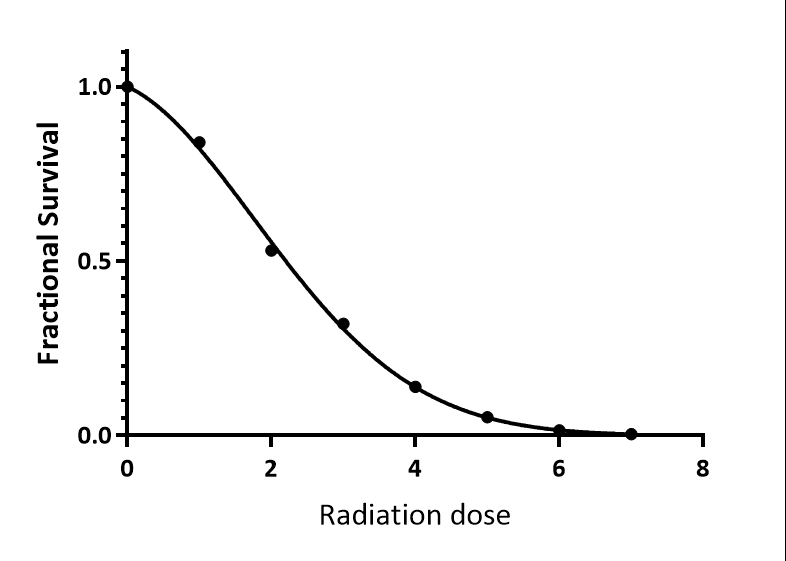What is the linear-quadratic model?
Mammalian cell death after exposure to radiation after a dose D of radiation often follows the linear-quadratic model (1-3).
Fraction of cells surviving = e-(A*D + B*D^2)

The linear-quadratic model was derived by Chadwick and Leenhouts (2). They proposed that the linear component (A*X) represents cell death due to a single lethal hit to the DNA, and that the quadratic (B*X2) component represents cell death that only happens with two hits. However, it is now clear that this mechanism is not correct, and the biological interpretation of the LQ parameters, A and B, is unclear (3).
Even though we don't know the biological basis for the model, it does a reasonable job of describing radiation induced cell death, except perhaps at very high radiation doses. Bodgi et. al. review the linear-quadratic equation and some alternatives (3) and propose a biological model that corresponds to the linear-quadratic model (4).
Sometimes the Y axis is plotted as the logarithm of fraction survival, rather than fraction survival itself.
References
Brenner, D. J. (2008). The linear-quadratic model is an appropriate methodology for determining isoeffective doses at large doses per fraction, 18/4: 234–9. Elsevier.
Chadwick, K.H., Leenhouts, H.P., 1973. A molecular theory of cell survival. Phys. Med. Biol. 13, 78–87.
Bodgi, L., Canet, A., Pujo-Menjouet, L., Lesne, A., Victor, J.-M., & Foray, N. (2016). Mathematical models of radiation action on living cells: From the target theory to the modern approaches. A historical and critical review. Journal of Theoretical Biology, 394: 93–101. DOI: 10.1016/j.jtbi.2016.01.018
Bodgi, L., & Foray, N. (2016). The nucleo-shuttling of the ATM protein as a basis for a novel theory of radiation response: resolution of the linear-quadratic model. International Journal of Radiation Biology, 92/3: 117–31. DOI: 10.3109/09553002.2016.1135260